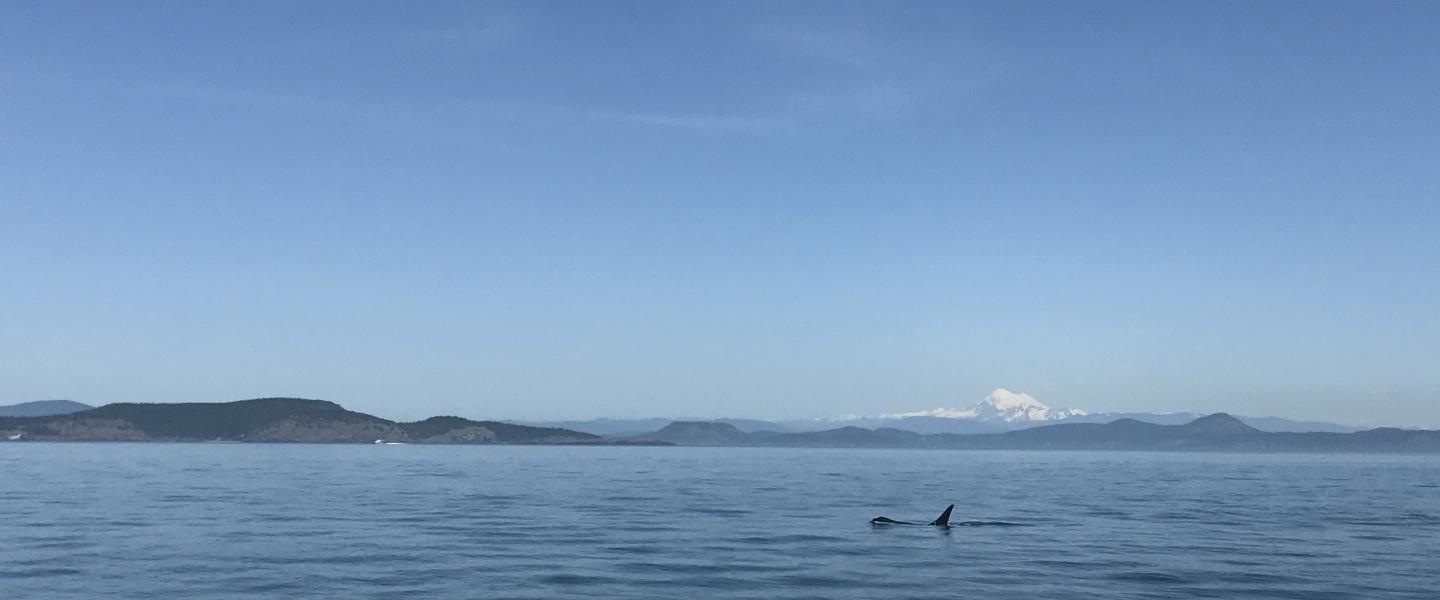
Sea Lion had some grand adventures today! But, don't we always? Today was unique in that we saw two very different, solitary whales. One lone humpback, which is not an unsual sight, was seen cruising through the Strait of Juan de Fuca near Hein Bank. Humpbacks are typically solitary creatures; they don't hang out with their squad at the local bars or bond with their families over lunch. So, it was expected that we see this massive baleen whale chilling on his or her own several miles south of San Juan Island, most likely looking for some food.
But what really had Naturalist Kelsey and I scratching our heads was the lone adult killer whale we heard reports of about halfway through our whale watch today. Killer Whales, as odontocetes, tend to be a lot more social. They do have a squad, and it's their family. Following a matriarchal social structure means that calves will stay with their moms for life - adorable, right? But its also crucial to their survival, because so many behaviors and skills are learned by passing them along from generation to generation. Most of the time when we see orcas out here, they're traveling in a pod. So to see this lone male really has us wondering - what's this guy even doing?
And sure, it's not like this is the only time in the history of the world that this has happened. Perhaps this male had peeled away from his family pod for a bit to get some alone time hunting or looking for a mate. He's a grown male - maybe his mother and siblings were getting on his last nerves and he needed a break. Hey, don't we all sometimes! On the Sea Lion, we spent a bit of time speculating over possible reasons for this interesting behavior, but what we really soaked in and absorbed was an amazing opportunity to hang out with a lone male orca. Because we were focused on him and only him, we noticed a lot more of the nuances in the orca's beahvior, like the way he altered his course when faced with obstacles and the way that his dorsal fin wobbled when he surfaced.
We identified this male as T77A, the son of T77 and sibling to T77B, T77C, and T77D. Where was the rest of his family? Probably out and about several miles away, perhaps doing their own form of recharging. Orcas are fascinating - it's hard to understand why they do what we do, but it sure is fun to think about!